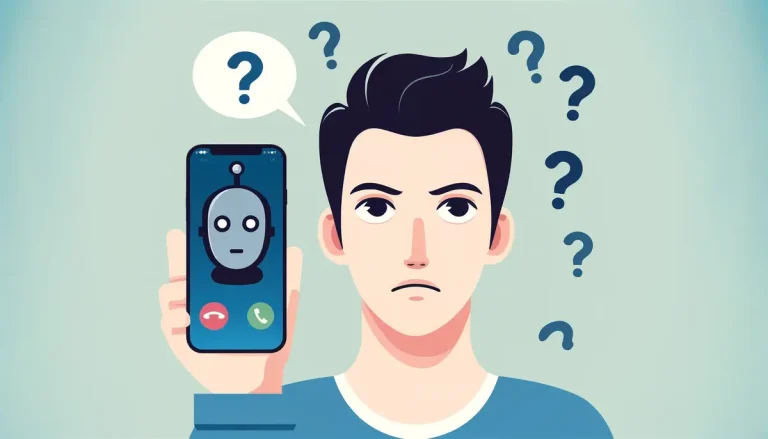
Businesses everywhere always seek ways to enhance efficiency, cut costs, and improve customer experiences. Outbound call centers, long seen as the frontline for sales, lead generation, and customer engagement, are no exception.
Traditionally, these call centers relied heavily on human agents manually dialing numbers, following scripts, and trying to close deals. But now, the landscape is changing fast.
With AI making groundbreaking strides, outbound call centers are transformed into lean, efficient, and smarter operations.
If you’re curious about how AI is reshaping outbound call centers and what it could mean for your business, this is the right place for you.
This blog will explore how AI is impacting outbound call centers, bringing enhanced productivity, personalization, and ultimately, better business outcomes.
What Is an Outbound Call Center?
An outbound call center focuses on reaching out to potential or existing customers. Unlike inbound call centers, where agents receive customer calls, outbound centers make the first move. These centers are typically used for telemarketing, sales campaigns, lead generation, and customer follow-ups.
The traditional outbound call center operates in a straightforward but labor-intensive way: agents dial numbers manually or use basic dialing systems, follow scripts, and try to persuade customers to make purchases, schedule meetings, or provide information.
Although effective to some extent, this model has many limitations, such as inefficiencies, high agent turnover, and the constant challenge of reaching the right people at the right time. AI covers these limitations, making the outbound calling process more efficient and targeted.
How AI is Transforming Outbound Call Centers?
AI’s impact on outbound call centers is profound and far-reaching. At its core, AI allows businesses to streamline operations, optimize agent performance, and make smarter, data-driven decisions.
The integration of AI technology enables outbound call centers to overcome the inefficiencies of traditional methods and focus on high-value tasks that improve customer engagement and conversion rates.
AI tools can analyze vast amounts of data in real time, automate repetitive tasks, and even learn from previous interactions to improve future performance. From automating dialing systems to customizing call scripts, AI has completely transformed how outbound call centers function.
AI-Powered Dialers
One of the first areas AI revolutionizes in outbound call centers is the dialing process. Manual dialing or even traditional auto-dialers can waste time, as agents may spend most of their day dialing numbers that lead to voicemails, busy signals, or unqualified leads. AI-powered dialers eliminate these inefficiencies by optimizing the dialing process.
These advanced systems use predictive dialing to automatically call multiple numbers at once and connect the agent only when a live person answers. AI dialers also use intelligent algorithms to predict when an agent will become available and prepare the next call accordingly, minimizing downtime. This increases the number of calls an agent can handle, directly impacting productivity.
Predictive Analytics for Better Targeting
AI doesn’t just make dialing faster—it makes it smarter. One of the key features of AI in outbound call centers is predictive analytics, which allows businesses to prioritize leads based on data. Traditional outbound centers often rely on broad customer lists without insight into who’s most likely to convert. AI uses historical data and customer behavior patterns to identify and rank the best leads for a campaign.
For instance, AI tools can analyze purchase history, engagement levels, and even social media behavior to determine which customers are most likely to respond positively to a call. This helps agents focus their energy on high-potential leads rather than wasting time on unqualified prospects.
AI also helps identify the best time to call, increasing the chances of reaching customers when they are more likely to engage. By using predictive models, businesses can optimize their outreach strategy, making each call more meaningful and impactful.
AI Voice Assistants and NLP
Another transformative AI innovation in outbound call centers is AI-powered voice assistants. These virtual agents can handle basic conversations, freeing human agents to focus on more complex interactions.
Using natural language processing (NLP), AI voice assistants can understand and respond to customer inquiries, guide them through simple transactions, or gather necessary information before passing them on to a human agent.
These voice assistants save time and enhance the customer experience by ensuring that calls are relevant and efficient.
For example, an AI assistant, such as Bigly Sales, can transfer the call to a human agent if the customer is unlikely to continue talking to an AI.
The Impact of AI on Outbound Calling
AI is bringing sweeping changes to outbound call centers, leading to significant improvements in efficiency, customer engagement, and overall performance. Let’s dive into some of the key impacts AI is having on outbound calling operations:
Improved Efficiency and Agent Productivity
AI dramatically improves agent productivity by automating many tedious tasks that would otherwise take up a large portion of their time. With AI-powered dialers and lead prioritization, agents can spend more time talking to qualified leads and less time dealing with voicemails, busy signals, or uninterested prospects. This means more meaningful interactions, sales opportunities, and better results.
Furthermore, AI tools help agents focus on what they do best—building relationships with customers and closing deals. By reducing repetitive tasks, AI allows agents to hone their skills and perform at their best, contributing to a more productive work environment.
Increased Call Volume and Better Targeting
Because AI-powered systems can automate many aspects of outbound calling, businesses can increase their call volume without sacrificing quality. AI algorithms ensure that each call is made to the right person at the right time, increasing the likelihood of a positive interaction. By improving the quantity and quality of calls, AI helps outbound call centers achieve better conversion rates.
Cost Reduction
Running an outbound call center traditionally requires a lot of manpower, which can lead to significant overhead costs. AI reduces these costs by automating key functions like dialing, lead scoring, and reporting. This allows businesses to do more with fewer human resources, saving money while maintaining high performance.
Personalization and Customer Engagement
Today’s customers expect personalized experiences, even during cold calls. AI can analyze data in real-time and allows outbound call centers to tailor their outreach based on the customer’s unique preferences and behavior. This personalization leads to higher engagement rates and more successful interactions.
AI tools can also recommend the best scripts or talking points based on customer data, ensuring agents deliver the most relevant and persuasive message possible.
The Role of AI in Improving Sales and Lead Generation
AI doesn’t just make outbound calling more efficient. It also boosts sales and lead generation by helping businesses focus on the right customers at the right time. By scoring and prioritizing leads based on historical data and customer behavior, AI enables sales teams to concentrate their efforts on the most promising opportunities.
AI also allows outbound call centers to adjust their call strategies in real time. For example, if data suggests that a certain script or approach is working better, AI can recommend changes to ensure agents use the most effective tactics. This dynamic, data-driven approach improves conversion rates and helps call centers meet their sales goals faster.
AI in Call Center Analytics and Reporting
AI doesn’t just help during the calling process; it also plays a crucial role in analytics and reporting. Call centers generate massive amounts of data daily, and AI tools can process this data quickly and accurately, providing actionable insights in real time.
Real-Time Monitoring and Insights
With AI, managers can monitor call center performance in real time, tracking key metrics like call duration, agent performance, and customer sentiment. This allows immediate adjustments if something isn’t working, leading to a more responsive and effective call center.
Automated Reporting
Gone are the days of manually sifting through call logs and performance reports. AI tools can automatically generate detailed reports, allowing managers to track important KPIs like conversion rates, agent productivity, and customer satisfaction without lifting a finger. This saves time and provides a more accurate view of the call center’s performance.
Real-World Examples of AI-Driven Outbound Call Centers
Many companies are already reaping the benefits of AI-powered outbound call centers. Businesses using AI tools are seeing improvements in everything from call volume to conversion rates. AI solutions allow these companies to connect with more customers, create personalized experiences, and close deals faster.
For example, businesses that use AI-powered predictive dialers and analytics have reported a significant reduction in idle time, allowing their agents to make more meaningful connections with leads. In addition, companies are also leveraging AI to fine-tune their sales strategies and improve their overall customer engagement efforts.
How Bigly Sales Transforms Outbound Call Centers with AI?
At Bigly Sales, we understand the power of AI in transforming outbound call centers. Our AI-powered tools streamline call center operations, making it easier for businesses to manage their outreach efforts while enhancing productivity and performance.
With AI-powered dialers, lead prioritization tools, and real-time analytics, Bigly Sales offers comprehensive solutions that help businesses optimize their outbound call strategies. Our AI-driven systems ensure every call is timely, relevant, and personalized, leading to higher engagement rates and better conversion outcomes.
What’s the Future of AI in Outbound Call Centers?
As AI continues to evolve, its role in outbound call centers will only become more pronounced. Advancements in natural language processing, real-time sentiment analysis, and AI-driven conversation bots will make outbound call centers even more efficient and customer-centric.
However, businesses must be prepared to embrace these changes by investing in the right AI tools and training their agents to work alongside this new technology. While AI can handle many tasks, human agents will always play a crucial role in building meaningful customer relationships and closing sales.
Conclusion
The transformation of outbound call centers through AI is not just a trend—it’s the future of business. AI is changing how companies approach outbound calling by increasing efficiency, improving customer engagement, and delivering better results. With AI-powered tools like predictive dialers, lead scoring, and real-time analytics, businesses can optimize their outbound call strategies and stay ahead of the competition.
Now is the time for businesses to adopt AI in their outbound call centers, not only to streamline operations but also to improve sales outcomes and customer satisfaction. The future of outbound calling is here, and AI is leading the charge.
FAQs
Some related FAQs:
1. What is an outbound call center?
An outbound call center is a type of call center where agents make outgoing calls to customers or prospects. The primary functions include telemarketing, sales, lead generation, customer follow-ups, and surveys. Unlike inbound call centers, where agents handle incoming customer queries, outbound call centers are proactive, focusing on outreach efforts.
2. How does AI improve outbound call centers?
AI enhances outbound call centers by automating routine tasks like dialing, lead prioritization, and script recommendations. It uses predictive analytics to identify the best leads and the ideal time to call, improving efficiency and conversion rates. AI tools can also personalize conversations, making interactions more engaging for customers. By freeing agents from repetitive tasks, AI allows them to focus on building relationships and closing deals.
3. What are AI-powered dialers, and how do they work?
AI-powered dialers automate the process of dialing phone numbers in outbound call centers. Unlike traditional dialers, AI-powered systems use algorithms to predict when an agent will become available and optimize the timing of calls. They also help avoid unproductive calls, such as voicemails or busy lines, by only connecting agents to live prospects. This increases the number of calls an agent can make, improving productivity and call success rates.
4. How does AI help with lead prioritization in outbound call centers?
AI uses predictive analytics to score and prioritize leads based on various data points, such as customer behavior, purchase history, and engagement levels. By analyzing this data, AI determines which leads are most likely to convert and ranks them accordingly. This allows agents to focus on high-potential prospects, increasing the likelihood of closing deals.
5. Can AI replace human agents in outbound call centers?
AI can automate tasks traditionally handled by human agents, such as dialing, lead scoring, and even basic conversations through AI voice assistants. However, it is not meant to replace human agents entirely. Instead, AI is a tool that enhances agents’ work, allowing them to focus on more complex and high-value tasks, such as building relationships with customers and closing sales. Human judgment and emotional intelligence are still essential for many interactions.
6. What is the role of AI voice assistants in outbound call centers?
AI voice assistants are virtual agents that can handle basic customer conversations, answer common questions, and gather preliminary information before passing the call to a human agent. These assistants use natural language processing (NLP) to understand and respond to customer queries. They help streamline the process by managing simple tasks and allowing human agents to focus on more complex interactions.
7. How does AI help improve customer engagement in outbound calling?
AI enhances customer engagement by personalizing outreach efforts. AI tools can analyze customer data in real time and adjust call scripts, making conversations more relevant and meaningful to the customer. By tailoring each interaction to the customer’s preferences, AI helps build better relationships and increases the chances of conversion.
8. How can AI reduce costs in outbound call centers?
AI reduces costs by automating time-consuming tasks like dialing, lead scoring, and reporting. This allows call centers to operate more efficiently with fewer agents while maintaining or even improving performance. AI also helps reduce human errors, saving time and resources that would otherwise be spent correcting mistakes.
9. What are the future trends of AI in outbound call centers?
The future of AI in outbound call centers includes advancements in natural language processing, sentiment analysis, and more sophisticated AI-driven conversation bots. As AI continues to evolve, it will become better at understanding customer emotions and preferences, enabling even more personalized and engaging conversations. Predictive analytics will become more advanced, further improving targeting and conversion rates. AI will also play a larger role in real-time decision-making and performance optimization.
10. How can Bigly Sales help outbound call centers with AI?
Bigly Sales provides AI-powered solutions tailored for outbound call centers. Our tools help automate dialing, prioritize leads, and provide real-time insights that improve call center efficiency. With Bigly Sales, businesses can streamline operations, boost agent productivity, and enhance customer engagement. By incorporating AI, Bigly Sales helps outbound call centers reduce costs, improve conversion rates, and deliver personalized customer experiences.







